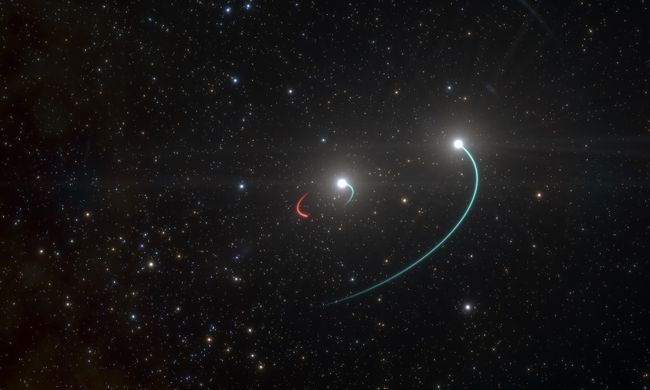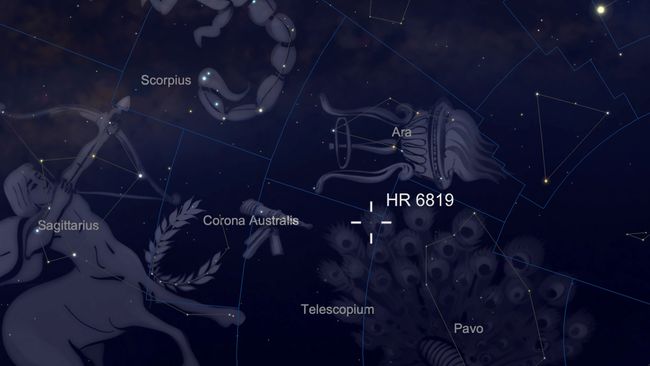Newfound Black Hole is the Closest one to Earth We’ve Ever Found
By Hanneke Weitering | Associate EditorSPACE.COM – May 6, 2020 | A newfound black hole may be the closest black hole to Earth, and you can spot its cosmic home in the night sky without a telescope.
The black hole, which is lurking 1,000 light-years from Earth in the southern constellation of Telescopium, belongs to a system with two companion stars that are bright enough to observe with the naked eye. But you won’t be able to see the black hole itself; the massive object has such a strong gravitational pull that nothing — not even light — can escape it.
This artist’s impression shows the orbits of the objects in the HR 6819 triple system, which consists of a binary star pair in which one star (orbit in blue) orbits a black hole (orbit in red), as well as another star with a wider orbit (also in blue). (Image credit: L. Calçada/ESO)They calculated that the object is a stellar-mass black hole — a black hole that forms from the collapse of a dying star — that’s about four times the mass of the sun.
“An invisible object with a mass at least four times that of the sun can only be a black hole,” Thomas Rivinius, a scientist with the European Southern Observatory who led the new study, said in a statement. “This system contains the nearest black hole to Earth that we know of,” he added.
After HR 6819′s black hole, the nearest known black hole is about 3,000 light-years away from Earth in the constellation Monoceros. But there could still be others lurking even closer that have yet to be detected; astronomers estimate that there are millions of black holes in our galaxy alone.
The black hole in HR 6819 is one of the first stellar-mass black holes found in our galaxy that does not release bright X-rays while violently interacting with its companion stars, and the discovery could help researchers find other similarly “quiet” black holes in the Milky Way, according to the statement.
“There must be hundreds of millions of black holes out there, but we know about only very few,” Rivinius said. “Knowing what to look for should put us in a better position to find them.”
The HR 6819 triple system, which consists of two stars and a black hole, is located in the modern constellation of Telescopium, which is visible from the Southern Hemisphere. The fifth-magnitude stars are bright enough to see without binoculars or a telescope under a clear, dark sky. (Image credit: SkySafari)
Appropriately located in the modern constellation of Telescopium.

